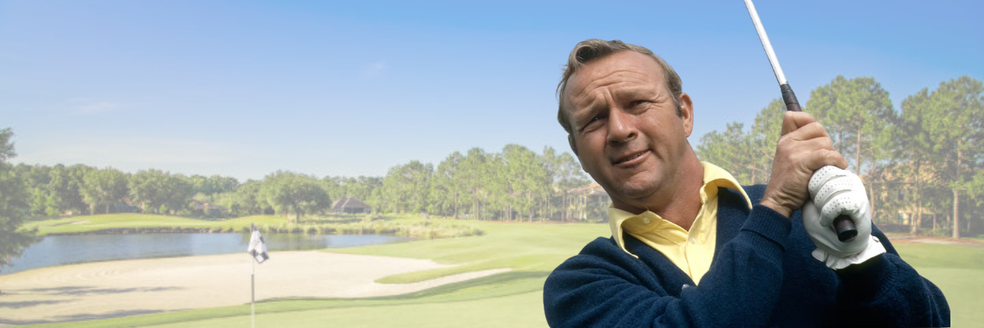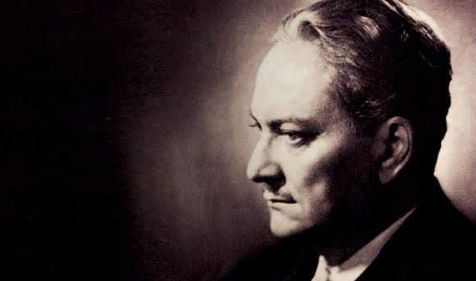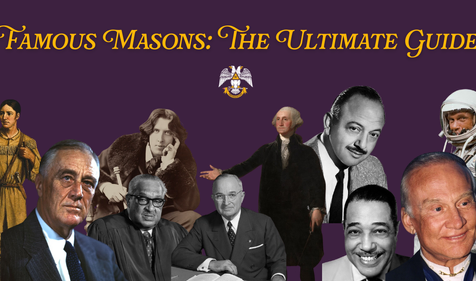Explore the inspiring Masonic journey and lasting legacy of Brother Arnold Palmer—golf icon, philanthropist, and proud 33° Scottish Rite Mason.
Few athletes have left a legacy as enduring as Brother Arnold Palmer. Known as much for his charm and humility as for his legendary golf swing, Brother Palmer was a trailblazer in professional sports, business, and philanthropy.
A 33° Mason, Brother Palmer lived a life of purpose, uplifting others through his example both on and off the green. From the rise of “Arnie’s Army” to his tireless advocacy for cancer research, discover the full story of the man who made golf and Freemasonry proud.
Early Days
Brother Arnold Palmer, affectionately called “Arnie” by loved ones, was born to Doris and Milfred Palmer on September 10, 1929, in Latrobe, Pennsylvania. Milfred worked at the Latrobe Country Club from 1921 until he died in 1976, giving Arnie ample opportunity to accompany his father as he worked.
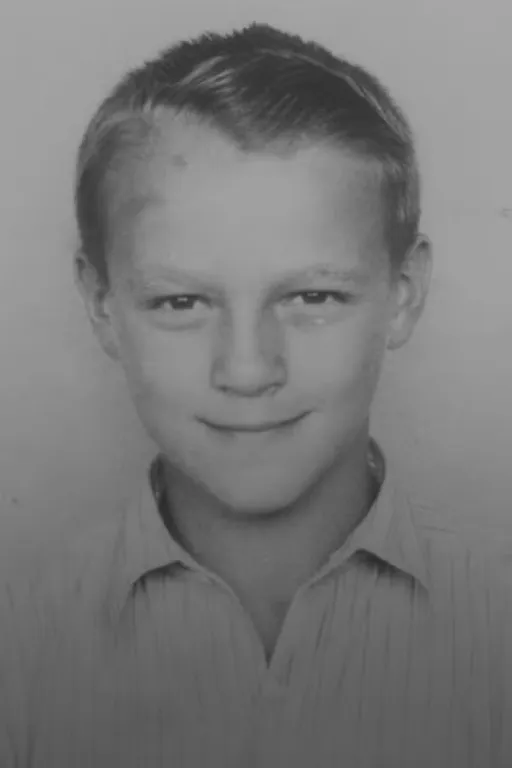
When he was just four years old, Milfred taught Arnie to play golf, and the young boy showed an immediate affinity for the game. Not long after, Arnie became better than even the adult caddies at the Latrobe and became a caddy himself at 11.
Career Beginnings
Brother Palmer continued to hone his golf skills throughout his adolescence, becoming a dominant player at Latrobe High School and winning the Pennsylvania high school championship twice. When he was just 17 years old, he won the first of five West Penn Amateur Championships and successfully competed in several national junior events.
His proclivity for golf led him to Wake Forest University (then Wake Forest College) on scholarship. He became one of the leading collegiate players during his time there. However, his college golf career was soon cut short. His close friend, Bud Worsham, was killed in a car accident in 1950. The loss deeply affected Brother Palmer, which led to his withdrawal from Wake Forest and enlistment in the U.S. Coast Guard.

However, his love for golf never left. During his basic training in Cape May, Brother Palmer built a 9-hole course, playing golf as often as his schedule allowed. Towards the end of his service, three years later, he transferred to the Ninth District Headquarters in Cleveland, Palmer, and served in the Coast Guard Auxiliary. The move brought him close to the Pine Ridge Country Club, where he continued to practice and enjoy his favorite sport.
In 1953, he began playing competitively again. He won the Ohio Amateur two years in a row, going on to win the U.S. Amateur in 1954.
Personal Life
During that period, Brother Palmer met Winifred Walzer at an Eastern Pennsylvania tournament. In 1954, they were married, and she soon joined him on a Pro Tour in 1955. They went on to have two daughters, Peggy and Amy, and were happily married for 44 years. Unfortunately, Winifred passed away from cancer in 1999.
Just two years before she passed, Brother Palmer himself was diagnosed with prostate cancer. However, he underwent surgery in 1997, leaving him cancer-free. He became a strong advocate of cancer research programs and early detection, establishing the Arnold Palmer Prostate Center in Palm Springs at the Eisenhower Lucy Curie Cancer Center. He also supported the Arnold Palmer Pavilion at the University of Pittsburgh Medical Center and Latrobe Area Hospital.
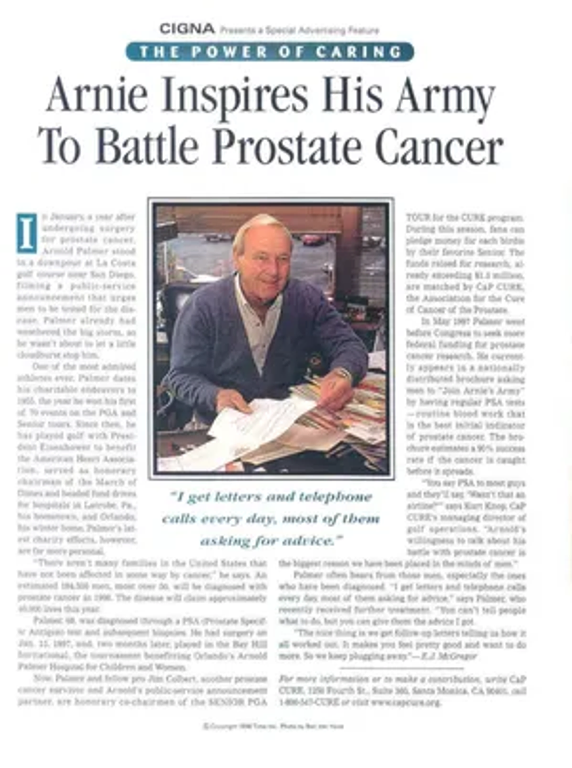
These efforts reflected his deep commitment to helping others—a natural extension of his Masonic values. He also supported numerous youth, health, and wellness initiatives through the Arnold & Winnie Palmer Foundation, which continues to honor their shared legacy of service.
In 2005, Brother Palmer married Kathleen Gawthrop in a private ceremony in Hawaii.
Masonic Journey
In 1959, Brother Palmer was raised as a Master Mason at Loyalhanna Lodge No. 275 in Latrobe. He remained active in the Craft throughout his life, eventually receiving the 33° in the Scottish Rite Northern Masonic Jurisdiction in 1997 and being honored with the Gourgas Medal in 2010. Illustrious Brother Palmer embodied Masonic values both on and off the course, demonstrating integrity, humility, and service in all areas of life.
The Rise of “Arnie’s Army”
As his career flourished, Brother Palmer’s charisma and fearless playing style attracted a legion of fans, lovingly dubbed “Arnie’s Army.” Originally a nickname for the soldiers stationed at Augusta National during the 1959 Masters, the phrase quickly became synonymous with his widespread and passionate fan base. “Arnie’s Army” revolutionized fan culture in golf and helped propel the sport to new heights of popularity.
Brother Palmer, in turn, never forgot those who supported him. He was known for signing every autograph, meeting fans with a smile, and always taking time for a handshake or a kind word. His connection to the everyday golf fan became one of the most defining elements of his legacy.
A Lasting Legacy
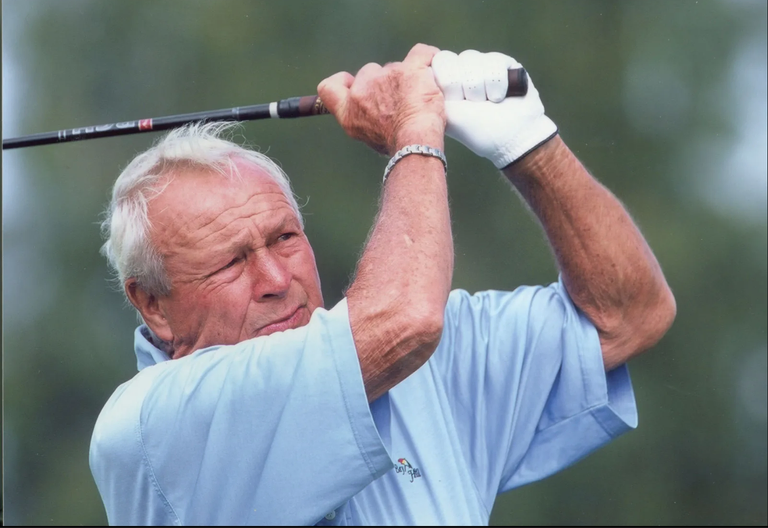
Illustrious Brother Palmer’s professional record is as impressive as his humanitarian contributions. He won 92 championships, including 62 PGA Tour titles between 1955 and 1973. His major wins include:
- Masters Tournament: 1958, 1960, 1962, 1964
- U.S. Open: 1960
- The Open Championship (British Open): 1961, 1962
From 1955 to 2011, he made $6.9 million in competitive earnings. He was named “Athlete of the Decade” for the 1960s in a national Associated Press poll.
Off the course, he was a pioneer in business and golf course design, creating more than 300 courses across the world. He competed in 50 consecutive Masters Tournaments, finally retiring in 2006.
In recognition of his impact, Palmer received the Presidential Medal of Freedom in 2004 and the Congressional Gold Medal in 2009, becoming one of only a few athletes to be honored with both.
Eternal Rest
Illustrious Brother Arnold Palmer passed to the Eternal Lodge on September 25, 2016, at the University of Pittsburgh Medical Center. Though he is gone, his influence endures—on the course, in Masonic lodges, in hospitals bearing his name, and in the hearts of millions who cheered him on.
Related Stories
Discover additional Scottish Rite blogs and news on this topic.
-
Manly P. Hall: Philosopher, Mystic, and Freemason
Famous Masons
Read More about Manly P. Hall: Philosopher, Mystic, and Freemason
-
Famous Freemasons: The Ultimate Guide
Famous Masons
Read More about Famous Freemasons: The Ultimate Guide
-
Was Robert Burns a Freemason?
Famous Masons
Read More about Was Robert Burns a Freemason?
